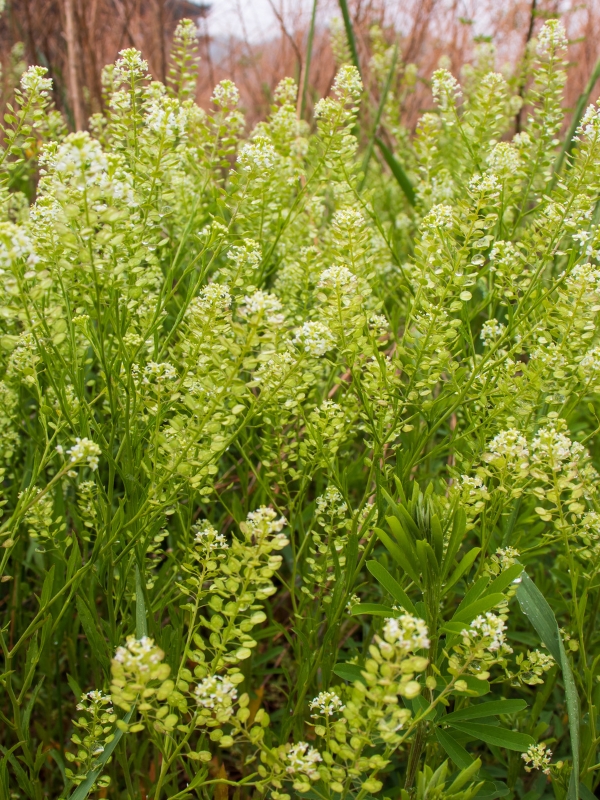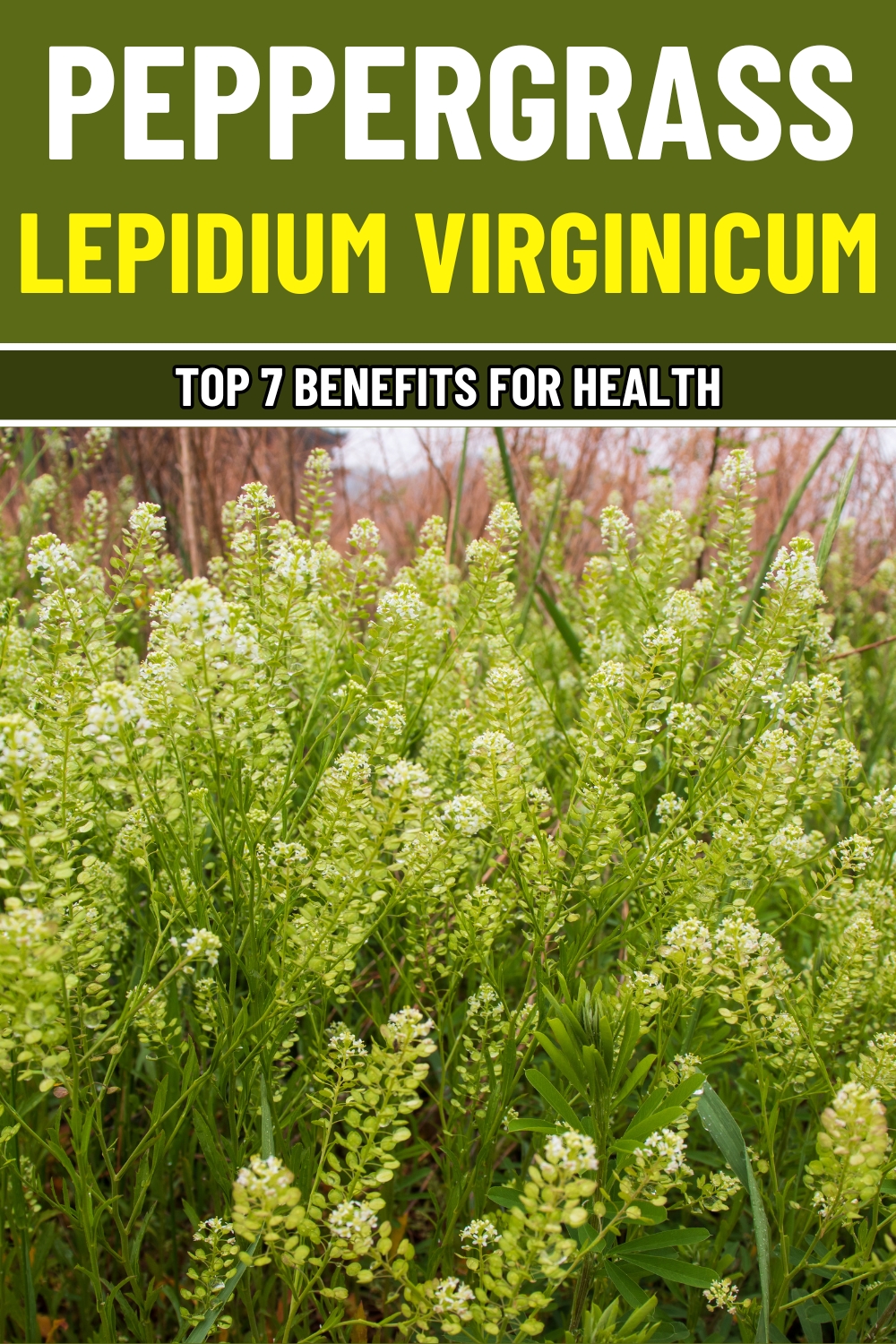Often mistaken for a common weed, Peppergrass (Lepidium virginicum), or Virginia pepperweed, is a versatile herb packed with medicinal properties. Its benefits range from supporting respiratory health to improving digestion and skin clarity.
Found in fields and roadsides, this member of the mustard family is rich in nutrients and bioactive compounds that provide substantial health advantages.
#1. Supports Respiratory Health
Peppergrass is widely recognized for its natural expectorant properties, helping to loosen and expel mucus from the lungs. This makes it particularly effective for managing respiratory issues like colds, bronchitis, and sinus congestion.
A study published in the Journal of Ethnopharmacology highlights that plants in the mustard family contain compounds that stimulate the mucous membranes, promoting clearer airways and reducing congestion.
The vitamin C content in Peppergrass, approximately 80 mg per 100 grams of fresh leaves, supports immune defenses while aiding respiratory recovery.

#2. Boosts Immune Function
Peppergrass is a rich source of vitamin C, antioxidants, and flavonoids, which work together to strengthen the immune system. These compounds neutralize free radicals, reduce oxidative stress, and enhance cellular repair.
Research published in Antioxidants Journal confirms that high levels of vitamin C, like those found in Peppergrass, enhance white blood cell production, improving the body’s ability to fight infections.
#3. Anti-inflammatory Properties
Peppergrass contains glucosinolates and flavonoids, both of which are potent anti-inflammatory agents.
These compounds help reduce inflammation in the respiratory tract, joints, and other affected areas, providing relief from conditions like arthritis and bronchitis.
A 2020 review in Frontiers in Pharmacology noted that glucosinolates in mustard-family plants significantly reduce markers of inflammation, making them beneficial for chronic inflammatory conditions.

#4. Promotes Digestive Health
Peppergrass aids digestion by stimulating digestive enzymes and improving gut motility. Its slightly spicy taste also encourages bile production, which helps in the breakdown of fats.
Herbs containing glucosinolates are shown to improve liver detoxification. Additionally, Peppergrass is rich in fiber, aiding in regular bowel movements and reducing bloating.
#5. Enhances Skin Health
The antioxidants in Peppergrass, including vitamin C and flavonoids, combat free radicals that cause skin aging.
These nutrients promote collagen production, enhance skin elasticity, and reduce inflammation associated with acne and other skin conditions.
Vitamin C-rich plants like Peppergrass can improve skin hydration and reduce wrinkles by supporting collagen synthesis.

#6. Supports Circulation and Cardiovascular Health
Peppergrass is a great source of potassium, an essential mineral for maintaining healthy blood pressure and reducing the risk of cardiovascular issues. Potassium helps balance sodium levels in the body, improving heart function and circulation.
Research from the American Heart Association shows that potassium-rich diets significantly lower the risk of hypertension and stroke. Peppergrass, with its high potassium content, offers a natural way to support cardiovascular health.
#7. Provides Antimicrobial Protection
The glucosinolates in Peppergrass exhibit antimicrobial properties, making it effective in combating harmful bacteria and fungi. It’s often used in traditional medicine to prevent minor infections and support wound healing.
You can add fresh peppergrass to salads or create an herbal tincture to help protect your body against infections.

How to Use Peppergrass
1. Peppergrass Tea for Respiratory Relief
To prepare a soothing tea, measure 1–2 teaspoons of dried Peppergrass leaves and seeds. Place them in a cup, then pour over 1 cup of boiling water.
Next, cover and steep for 10–15 minutes to extract its beneficial compounds. Strain the tea, add honey or lemon if desired, and drink while warm.
You can consume this tea 2–3 times daily, relieve congestion, and improve respiratory health.
2. Steam Inhalation for Sinus Congestion
First, you need to boil a pot of water and add a handful of fresh or dried Peppergrass leaves.
Then, remove the pot from heat, position your face over the steam, and cover your head with a towel.
Inhale deeply for 5–10 minutes to loosen mucus and clear airways.
3. Peppergrass Tincture for Immune Support
To make a tincture, combine fresh Peppergrass leaves and seeds with high-proof alcohol in a jar.
Seal tightly and let it steep for 4–6 weeks in a cool, dark place, shaking occasionally.
Strain the liquid into a dropper bottle and take a few drops diluted in water up to three times daily for immune and respiratory support.
Culinary Uses
Peppergrass’s young leaves add a peppery kick to salads, soups, and stir-fries. The seeds can be dried and ground into a flavorful spice, perfect for seasoning meats, roasted vegetables, or even bread dough.

Precautions and Safety
Avoid use during pregnancy or while breastfeeding, as there is limited research on its safety.
Conduct a patch test before topical application, especially if allergic to mustard-family plants.
If you have asthma, hypertension, or other medical conditions, consult a healthcare provider before use.
Disclaimer
This article is for informational purposes only and does not constitute medical advice.
Always consult a healthcare provider before using herbal remedies, especially if you are pregnant, nursing, or have existing health conditions.

Unlock the Hidden Benefits of Peppergrass (Lepidium virginicum): A Natural Remedy for Your Health
